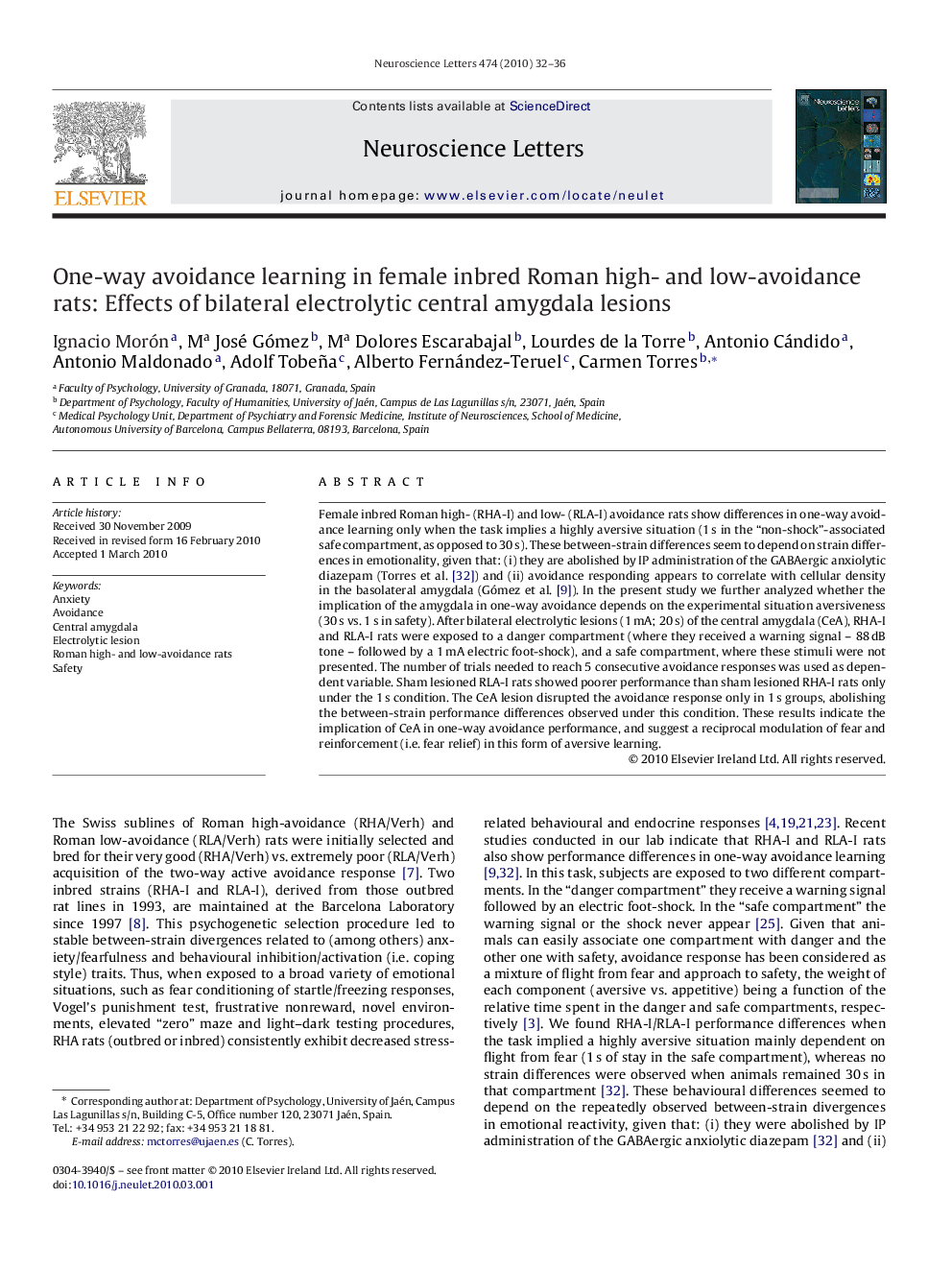| Article ID | Journal | Published Year | Pages | File Type |
|---|---|---|---|---|
| 4346581 | Neuroscience Letters | 2010 | 5 Pages |
Abstract
Female inbred Roman high- (RHA-I) and low- (RLA-I) avoidance rats show differences in one-way avoidance learning only when the task implies a highly aversive situation (1Â s in the “non-shock”-associated safe compartment, as opposed to 30Â s). These between-strain differences seem to depend on strain differences in emotionality, given that: (i) they are abolished by IP administration of the GABAergic anxiolytic diazepam (Torres et al. [32]) and (ii) avoidance responding appears to correlate with cellular density in the basolateral amygdala (Gómez et al. [9]). In the present study we further analyzed whether the implication of the amygdala in one-way avoidance depends on the experimental situation aversiveness (30Â s vs. 1Â s in safety). After bilateral electrolytic lesions (1Â mA; 20Â s) of the central amygdala (CeA), RHA-I and RLA-I rats were exposed to a danger compartment (where they received a warning signal - 88Â dB tone - followed by a 1Â mA electric foot-shock), and a safe compartment, where these stimuli were not presented. The number of trials needed to reach 5 consecutive avoidance responses was used as dependent variable. Sham lesioned RLA-I rats showed poorer performance than sham lesioned RHA-I rats only under the 1Â s condition. The CeA lesion disrupted the avoidance response only in 1Â s groups, abolishing the between-strain performance differences observed under this condition. These results indicate the implication of CeA in one-way avoidance performance, and suggest a reciprocal modulation of fear and reinforcement (i.e. fear relief) in this form of aversive learning.
Keywords
Related Topics
Life Sciences
Neuroscience
Neuroscience (General)
Authors
Ignacio Morón, Ma José Gómez, Ma Dolores Escarabajal, Lourdes de la Torre, Antonio Cándido, Antonio Maldonado, Adolf Tobeña, Alberto Fernández-Teruel, Carmen Torres,
